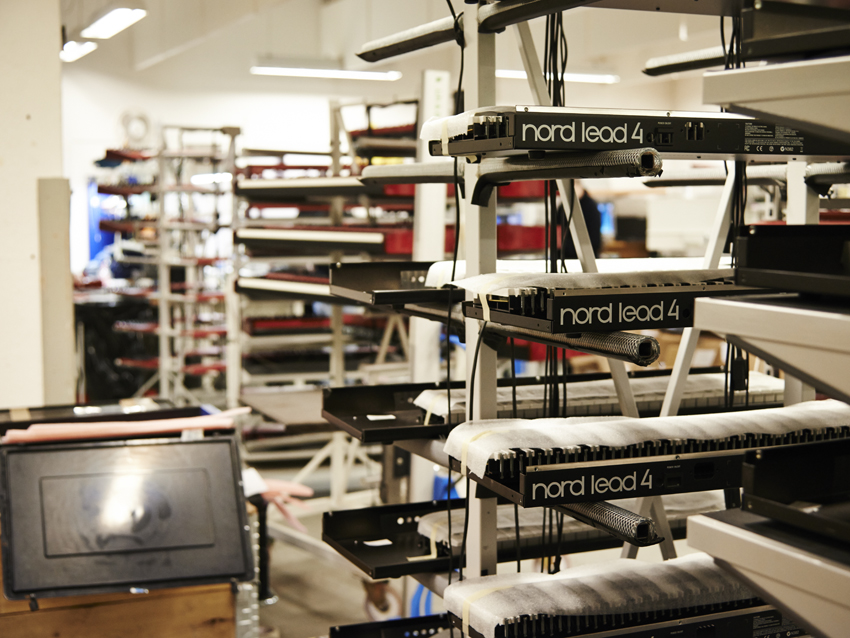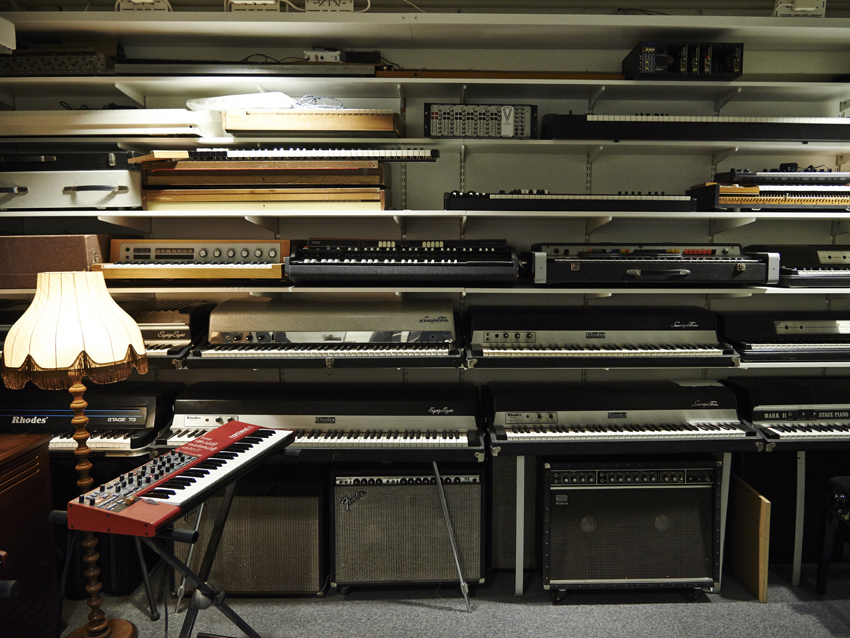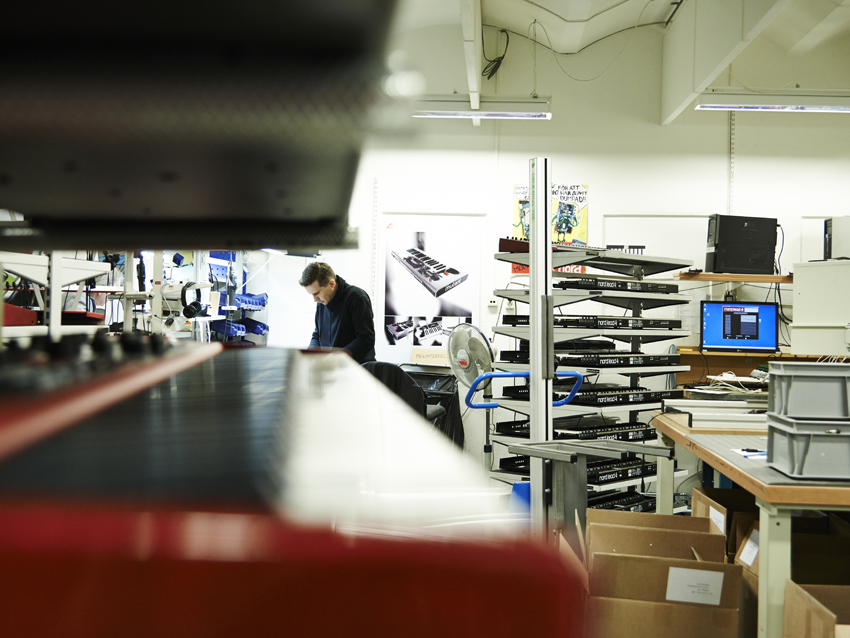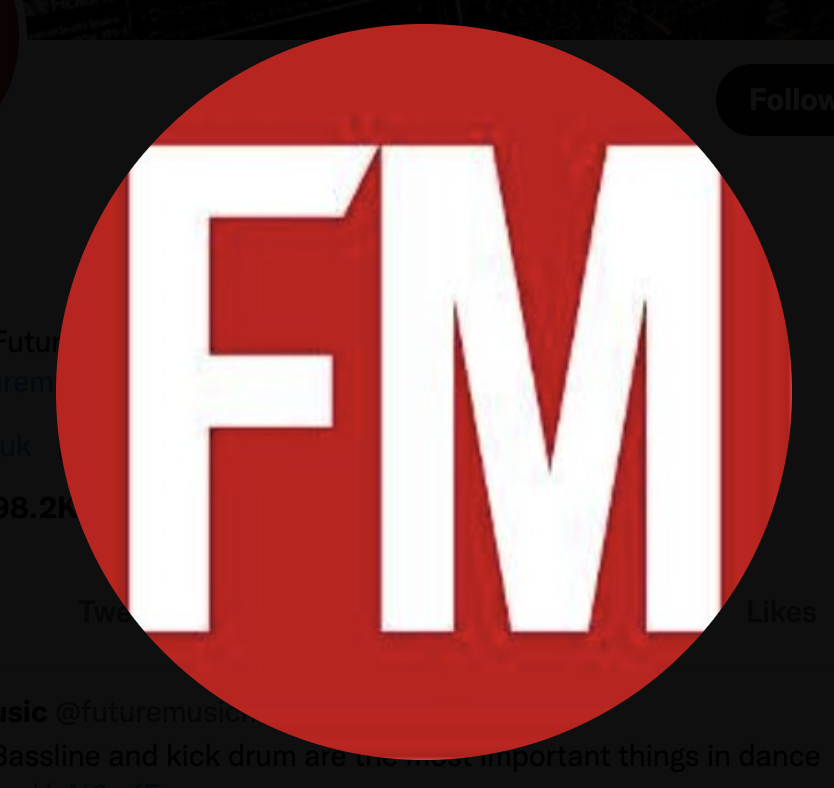In pictures: Inside Nord's Stockholm factory
We meet co-founder Hans Nordelius at Clavia HQ

Hans Nordelius
After an early career developing electronics for Sweden's telecommunications industry, Hans Nordelius founded Clavia – the company behind Nord instruments – alongside Mikael Carlson in the early '80s.
Following early success with their Digital Percussion Plate (DPP) range, the first Nord Lead synthesizer arrived in 1995, bringing with it a ground- breaking leap in virtual analogue technology. Several updates, Stage pianos and modular systems later, and the rest, as they say, is history.
Today Nord gear is devised, developed and hand-built in an old 19th century cigarette factory, tucked behind an unassuming, graffiti-covered facade in Stockholm's fashionable Södermalm district.
See more inside Future Music 288: The Synth Issue, which is on sale now.

Assembly
How long was the first Nord Lead in development before its release in ‘95?
“It was quite a fast project, because I had two software engineers employed at the time. It was based on an old dream we had to make a completely digital Prophet-5, because I had one but it was very expensive and had a lot of tuning problems.
"At the beginning of the ‘90s we looked around to see what kind of CPU or processors were available, but you didn’t have enough power at that time. But by ‘94 we realised that there was a DSP available with enough power, so we decided we could create an analogue modelling synthesiser. From there we made it in eight months, I don’t know how we managed it, looking back, we were just three guys.”
Did you spend much time examining the components of classic synthesisers before creating the analogue modelling engine in the original Nord Lead?
“Not much. The whole thing was created in just eight months. We didn’t spend time investigating things because we were familiar with classic subtractive synthesis – there are a couple of oscillators, a couple of filters, LFOs, etc. – so we just tried to create those as best as possible.
"Of course you get a lot of aliasing and grainy sound when creating sawtooths or triangle oscillators, so we had to oversample the engine twice to get a cleaner sound. It was something like a Minimoog or Prophet-5 architecture.”

Instrument collection
You have a room in the factory packed with classic organs, synths and electronic instruments, has the process of sampling and examining those been an ongoing thing since the release of the first Nord Lead?
“Yes, after the first generation people came to us and they wanted something like a Prophet-5 version two filter, or a really good Moog filter. We hadn’t studied them, we just created a general analogue filter. So later on we were more aware of different kinds of analogue filters. Then we went in to exploring other analogue synthesisers, but at the same time it was important that the Nord Lead had its own sound.
“We’re not analogue freaks here. There are still a lot of analogue synthesisers on the market, and I like that. But Business wise, synthesisers are only a small part of what we do. We love it, but the Stage pianos and Electros are bringing home the bacon, so to speak. It’s a challenge to make a synthesiser though, there are no limitation on how complicated it can be.
"When we made the Nord Modular, we had a very nice community around it, but the demands from that community were increasing all the time, so the work developing a system like that takes a lot of software engineers. We were draining the company on the R&D department, for a very small market. So we almost killed ourselves. After that we said no more modular systems.
“We still use the modular system in our work, almost daily. It’s very important to me. We use it almost like a laboratory; when you’re thinking of an idea for a new synthesiser you can use that to build it up, so it’s still a good system. I want to improve it but if I even whisper about improving it my software engineers and my partner go crazy…”

Nord Stage
Do you still keep synthesiser development going constantly, even if the Stage pianos are the company’s main focus?
“Yes, we’re always working on them in parallel. We’re developing new Stages and new Electros, but we want to take care of the synthesisers, with things like the Lead A1 and the Lead 4. I really love the Nord Lead A1, it’s my baby; it’s very simple and very fast. So we have the synthesisers, we have the Stage pianos, a small organ line and the drum line, so it’s quite full. And we’re trying to develop these lines all the times.”

From design to testing
What, to you, makes Nord synthesisers unique compared to the rest of the market?
“Of course there’s playability, and then we have our simplified user interface, which is one layer, and doesn’t have a thousand features. It takes a guy like me and my colleagues, when we make a product, to say no to a lot of feature requests from the market and from people outside. You have to take risks like that, like when we made the A1.
"When that first appeared on the market a lot of people were angry because it was too simple. But to make things simple is not easy, and to stick to that line. You have to be quite conservative and just say no to a lot of things. In the beginning we weren’t so sure if our concept would work, so we took a risk. In the early days, the English magazines especially didn’t like our products, the said they were too expensive, had no hard disk drive, etc. etc.
"But we took a risk and just kept on going, because I think I know how a musician thinks. There are people working in studios in the music industry who will have complex instruments, but for me the most important market is on stage.
"I like to compare it to a guitar player, because guitar players and drummers are the most fun musicians to see [on stage]. They make extremely interesting sounds with a few knobs and pedals; it’s not much, but they have control of it. The whole show isn’t pre-programmed and I wanted to see a keyboard player having that kind of freedom to control the sound. That’s my main drive with synth design, but it depends on what kind of musician you are, I guess, for me it should be quite easy – sophistication based on simplicity.”
“Then you have the sound, of course. I’m a piano player myself, so piano sounds are very important. Also, the response from the keys is very important, there needs to be a very small latency, of course. From the drum business we learned that latency is very important, because when we made the first integrated drum brain based on a CPU we had a complaint from drummers saying ‘you have some latency here’, and we measured at it was only ten milliseconds, but even nine or ten is still too much. You can feel it in your hand. So we learned from that – even if you’re not a drummer it’s still important.”

Branding
Where did the iconic red design come from?
“It started quite early. The first DDrum was red, I don’t really know why… You see it well on stage, it stands out Some people hated the red in the beginning, and we were speaking about changing the colour maybe 15 years ago.
"We made a drum brain called Nord Drum 280, and we made the box red. We had a dinner in Frankfurt with maybe ten of our key distributors and they all got really excited about the colour, the Italian guys said the red reminded the of Ferraris…
“We have request sometimes for other colours. Kraftwerk asked for grey or blank synthesisers many years ago, and we said no and they didn’t buy them. But we didn’t want to repaint them.”
Future Music is the number one magazine for today's producers. Packed with technique and technology we'll help you make great new music. All-access artist interviews, in-depth gear reviews, essential production tutorials and much more. Every marvellous monthly edition features reliable reviews of the latest and greatest hardware and software technology and techniques, unparalleled advice, in-depth interviews, sensational free samples and so much more to improve the experience and outcome of your music-making.


